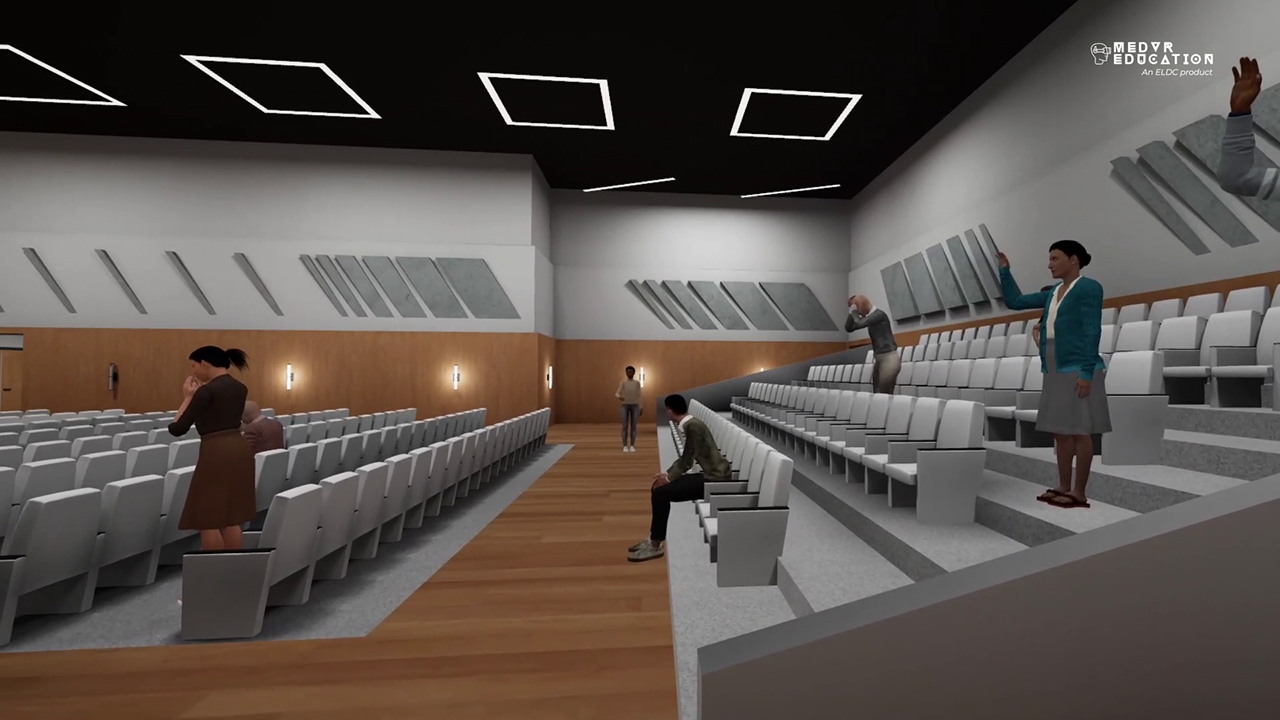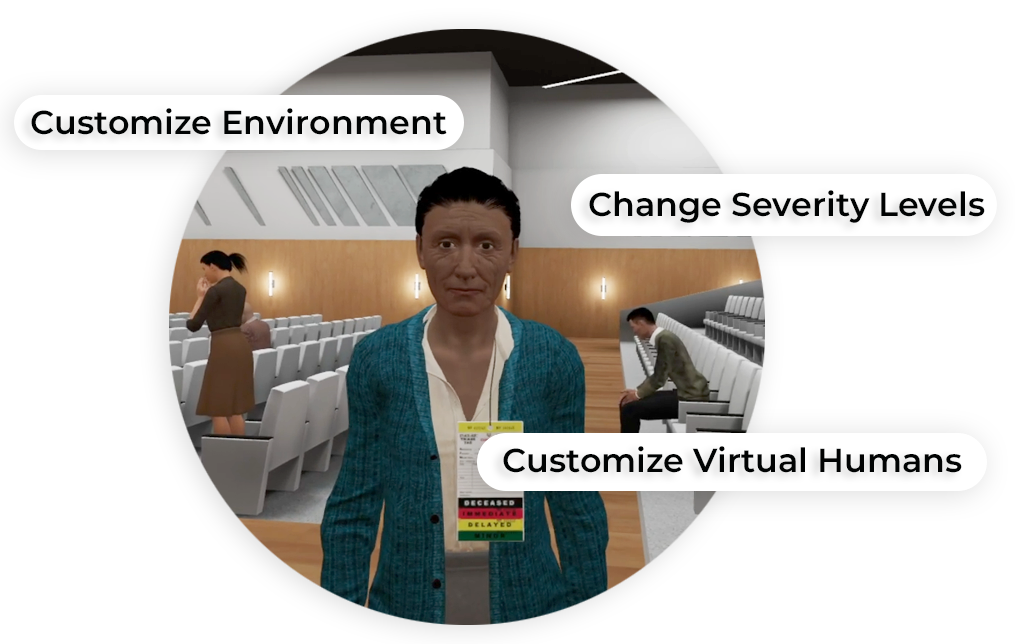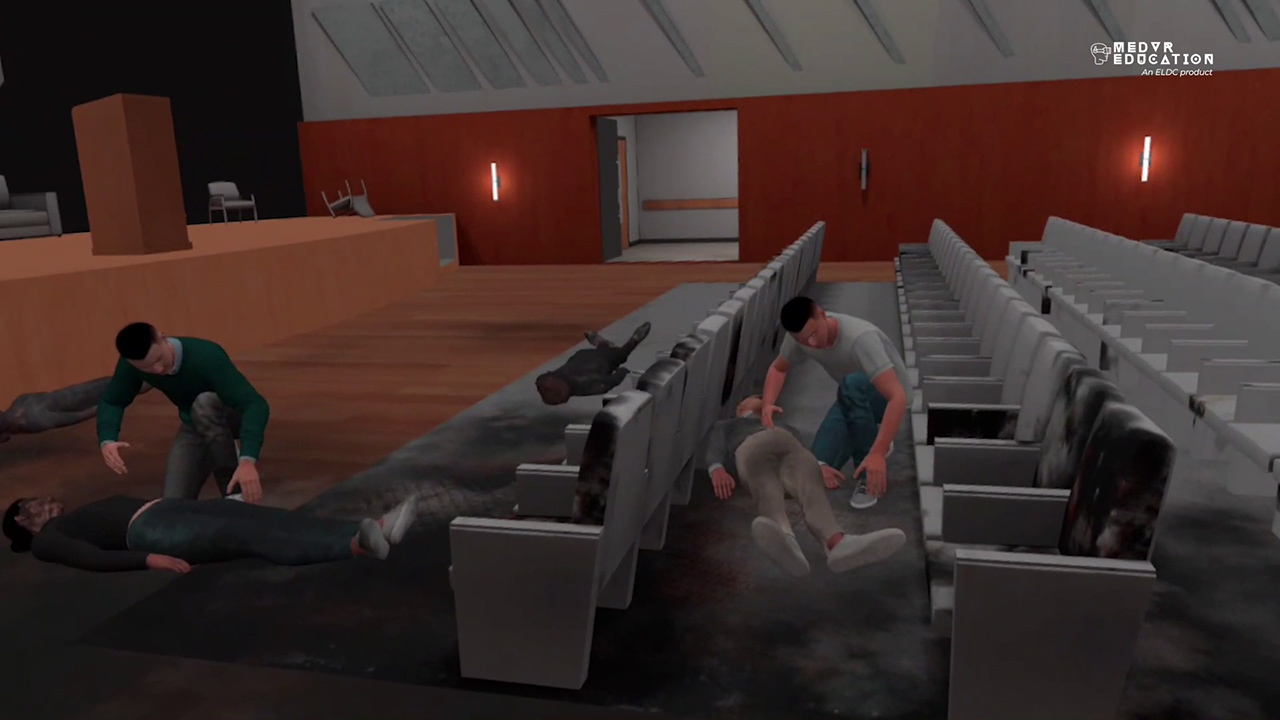EMS Triage
Step into the shoes of a first responder and experience the intensity of a fire emergency in a packed auditorium.
This Triage VR open scenario is designed to equip learners with vital lifesaving skills and train them to handle critical situations with composure and efficiency. As learners navigate through the chaos, they will learn to assess the severity of injuries and prioritize treatment.
Triaging patients during a mass casualty event is an essential skill for first responders. Without continued deliberate practice their ability to do the best for maximum number of people is diminished. With hands-on experience in a controlled, risk-free environment, learners develop the confidence to make critical decisions swiftly and effectively.
- Conduct triage assessment during mass casualty incident
- Identify correct triage level of victims
- Review appropriate triage categories
- Assign triage tags to the victims

- Simple Triage and Rapid Treatment (START): Benson M, Koenig KL, Schultz CH. Disaster triage: START, then SAVE! Cleveland Clinic Journal of Medicine. 2005; 72(11): 947-958.
- Emergency Severity Index (ESI): Wuerz RC, Milne LW, Eitel DR, Travers D, Gilboy N. Reliability and validity of a new five-level triage instrument. Acad Emerg Med. 2000;7(3):236-242.
Customize Your Program
Get rid of the editor. Adopt in-VR customization.
MedVR Education is bringing to you in-VR customization that will enable you to put together your own simulations by making selections from a wide range of feature choices.
- Select patient from a diverse background
- Choose preferred virtual environment
- Configure patient vitals
- Define simulation duration
- Create patient history and train with AI-Humans
- Customize session-end debriefing
- …..many more to come

 AI Patient Assessment
AI Patient Assessment Natural Language Processing
Natural Language Processing Multi-player Sessions
Multi-player Sessions Physics-based Interaction
Physics-based Interaction
Core Skills Training

Triage Assessment
In this realistic environment, learners will find themselves in a fire emergency scenario with causalities and serious injuries. As part of the triage process, users are required to identify and sort people with minor injuries, serious injuries, and the deceased. The people with minor injuries, who can walk, are to be asked to gather in a designated spot. Having tagged them, the user will proceed to check the other victims. Their pulse and respiration need to be checked, and depending upon their condition they need to be appropriately tagged.
Users are placed in a photorealistic disaster location and provided all necessary affordances to complete the triage process. This helps them get accustomed to disaster situations and gain confidence to face real life challenges.





